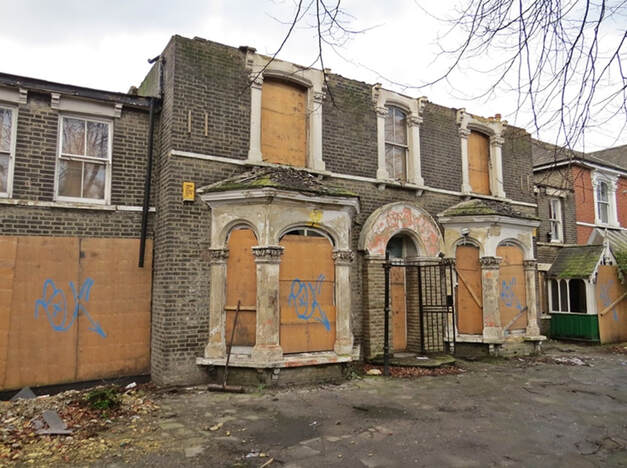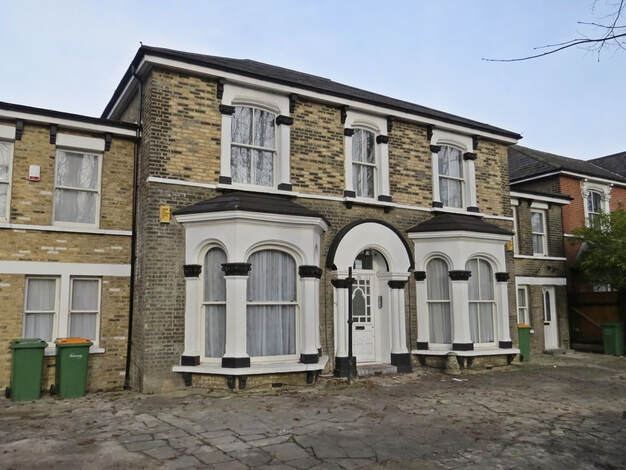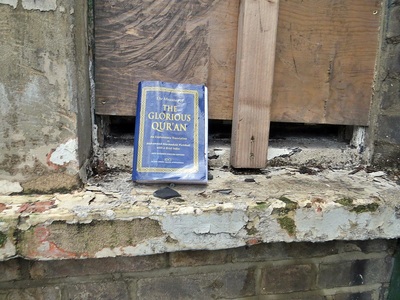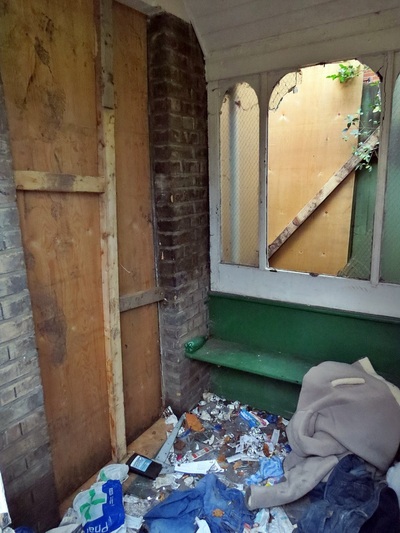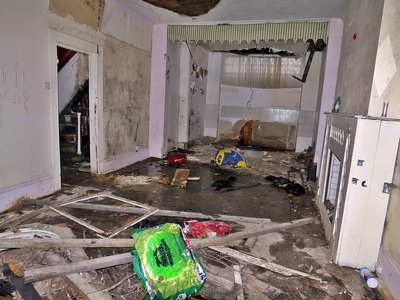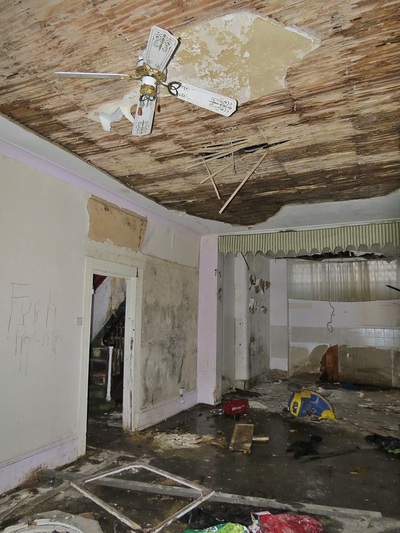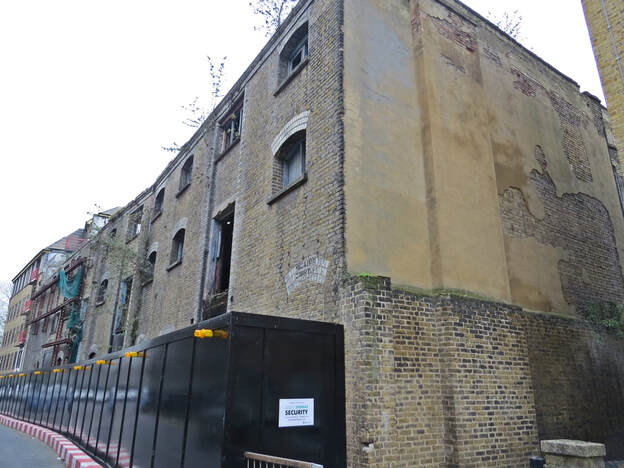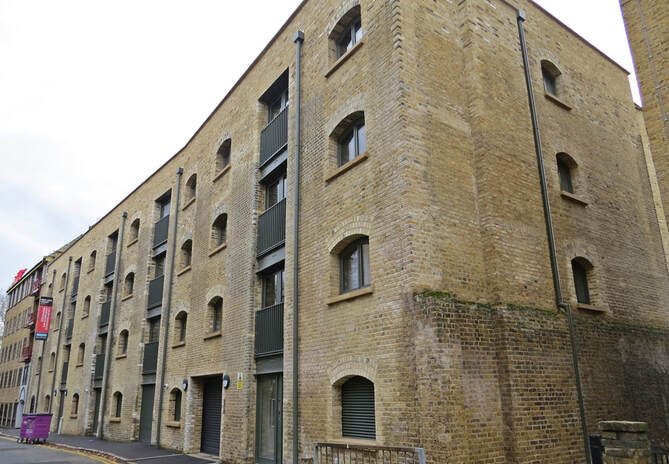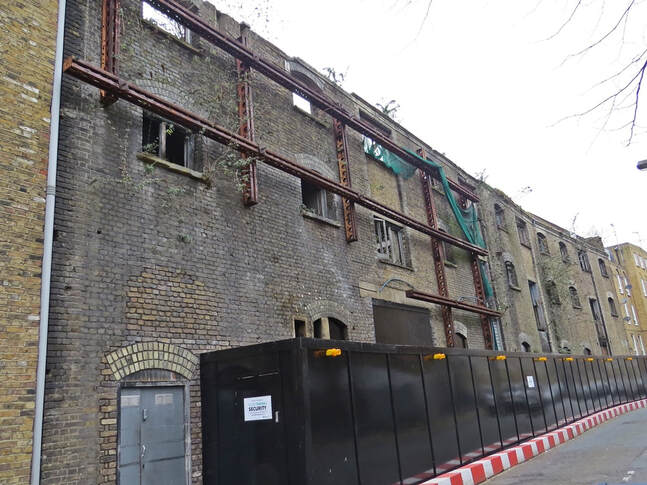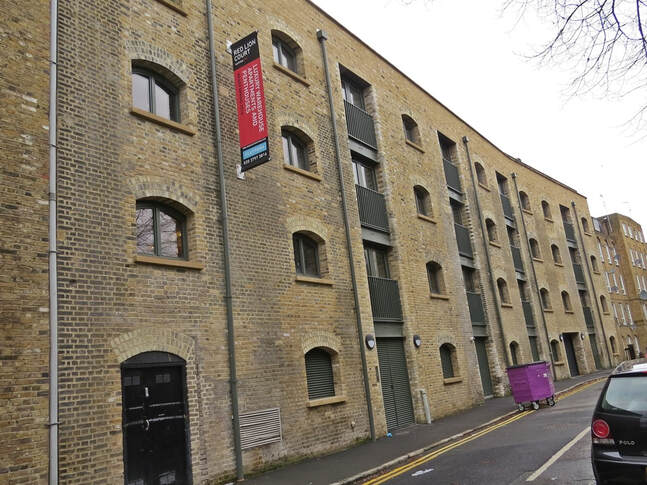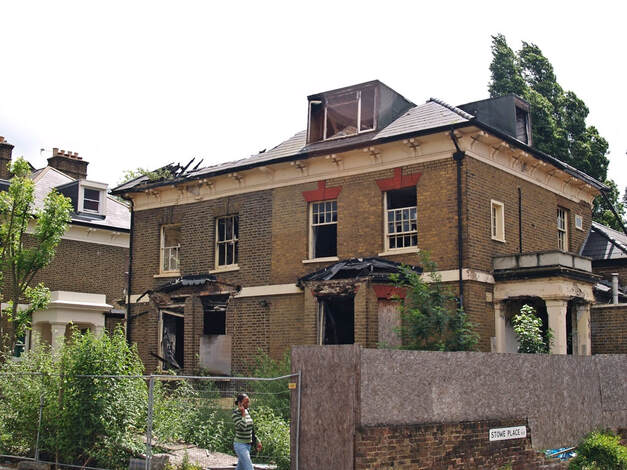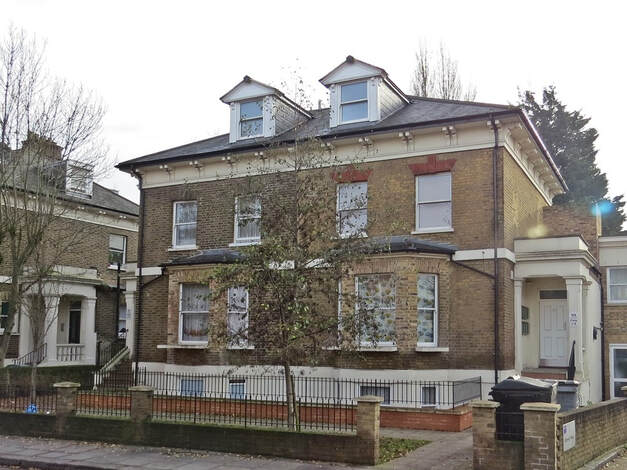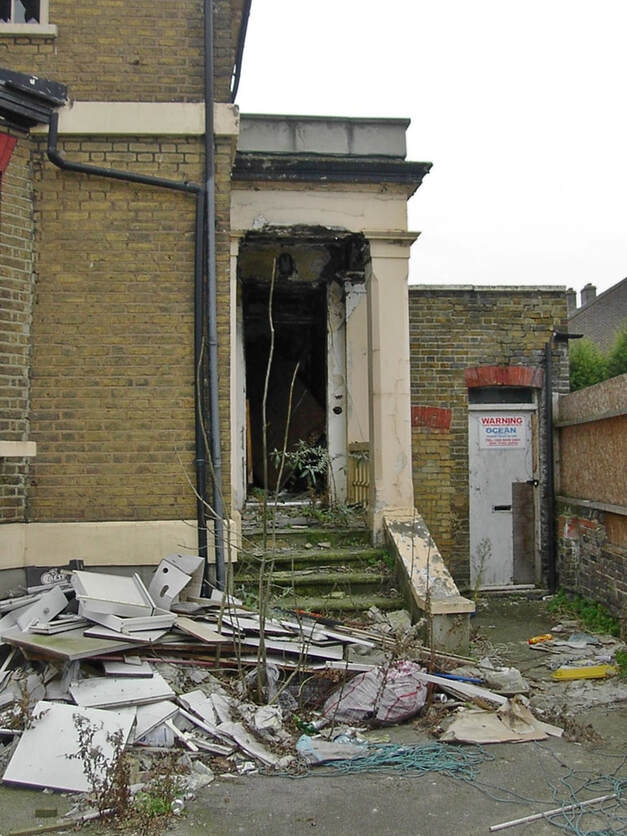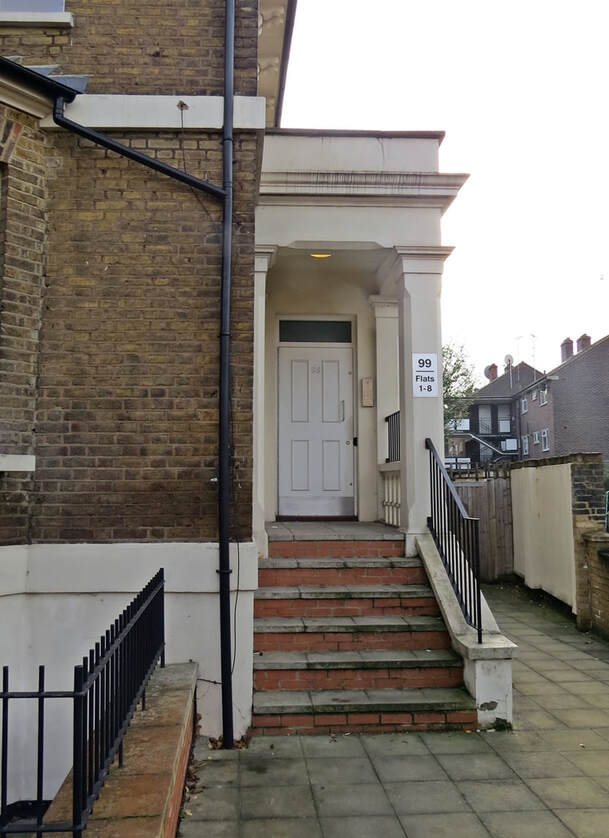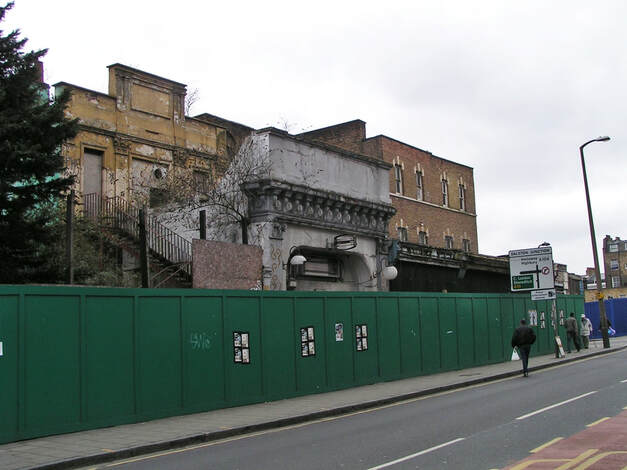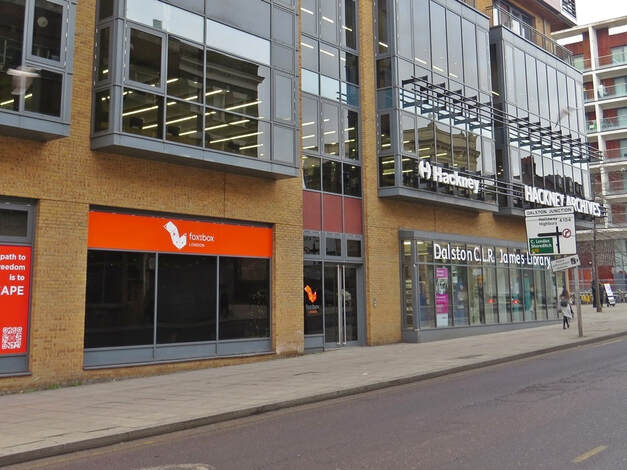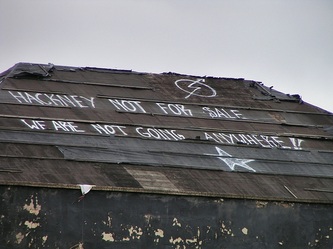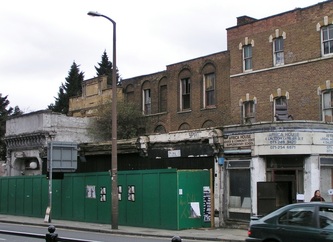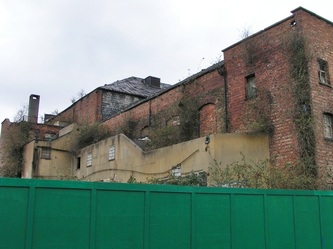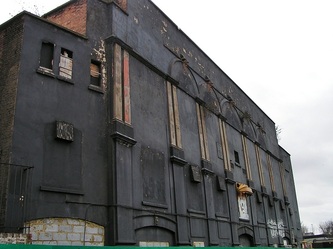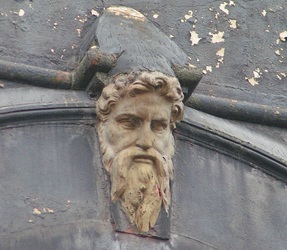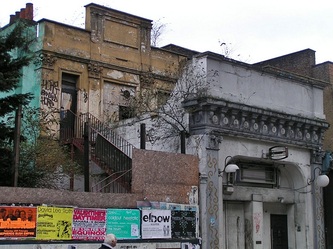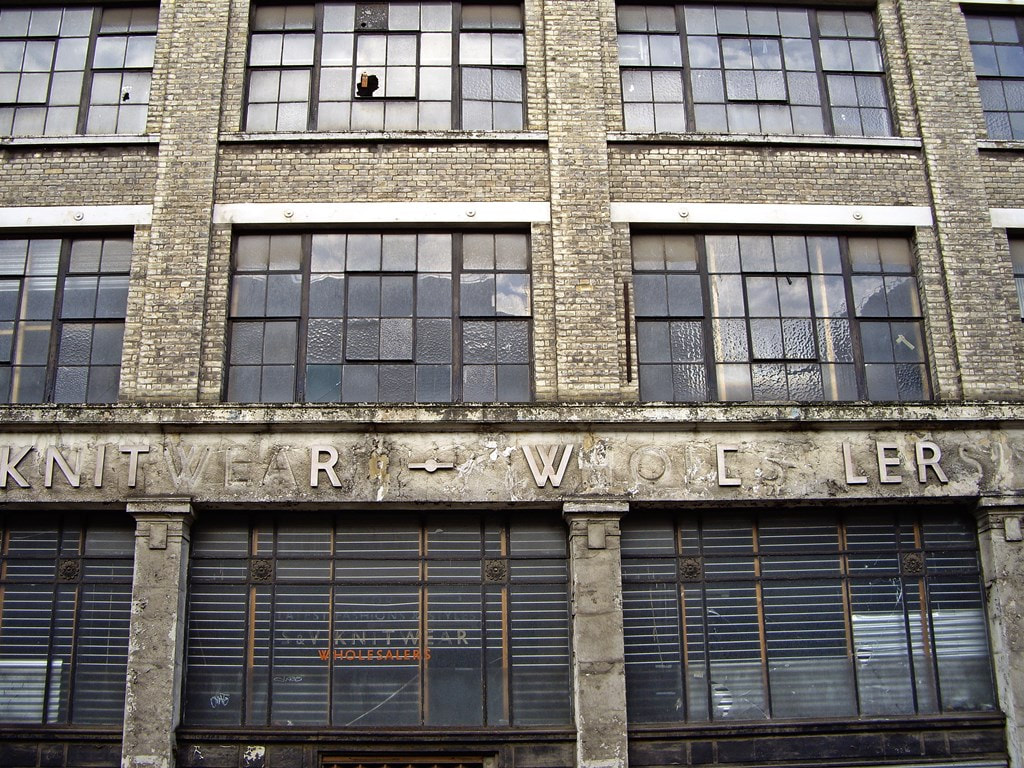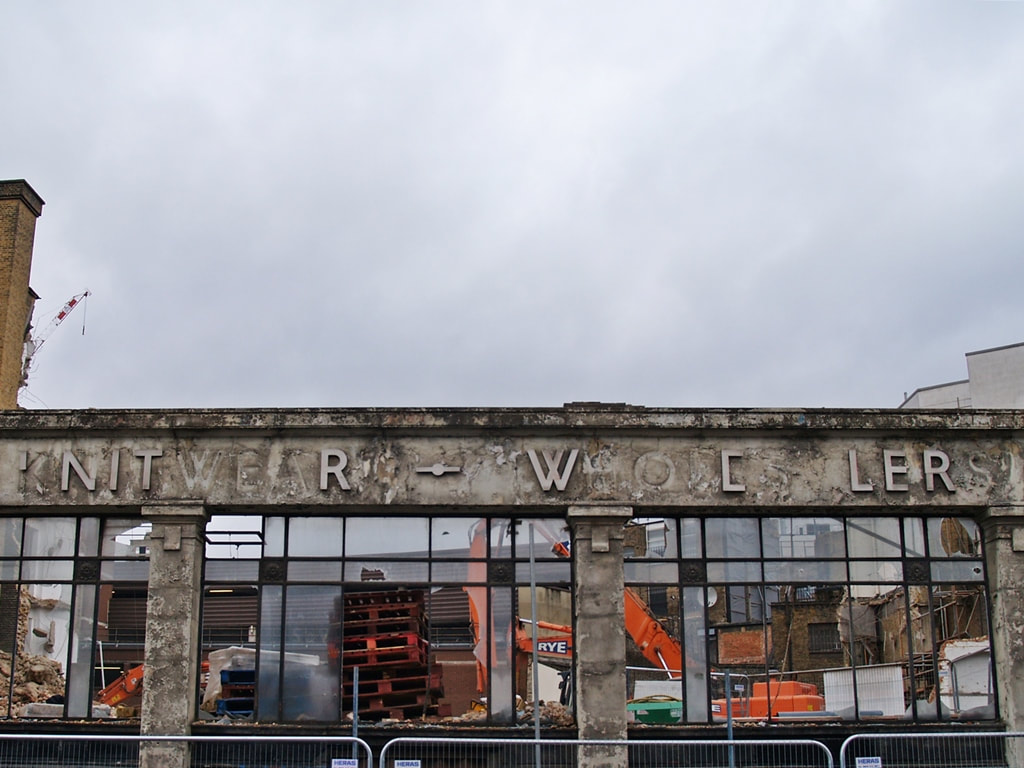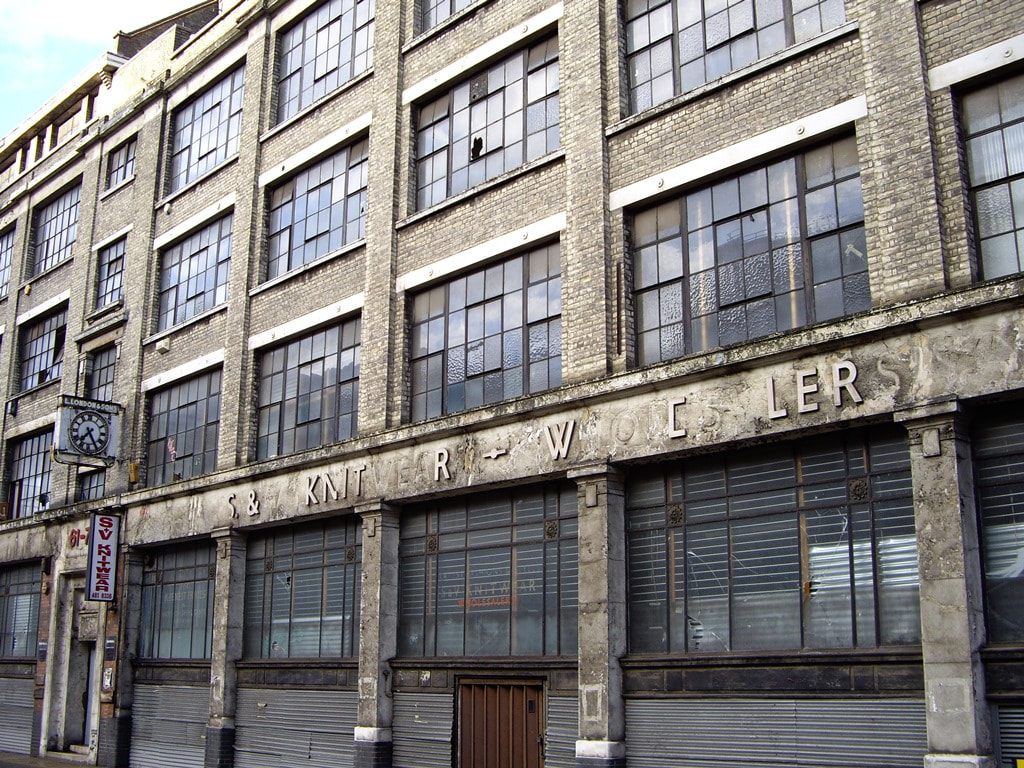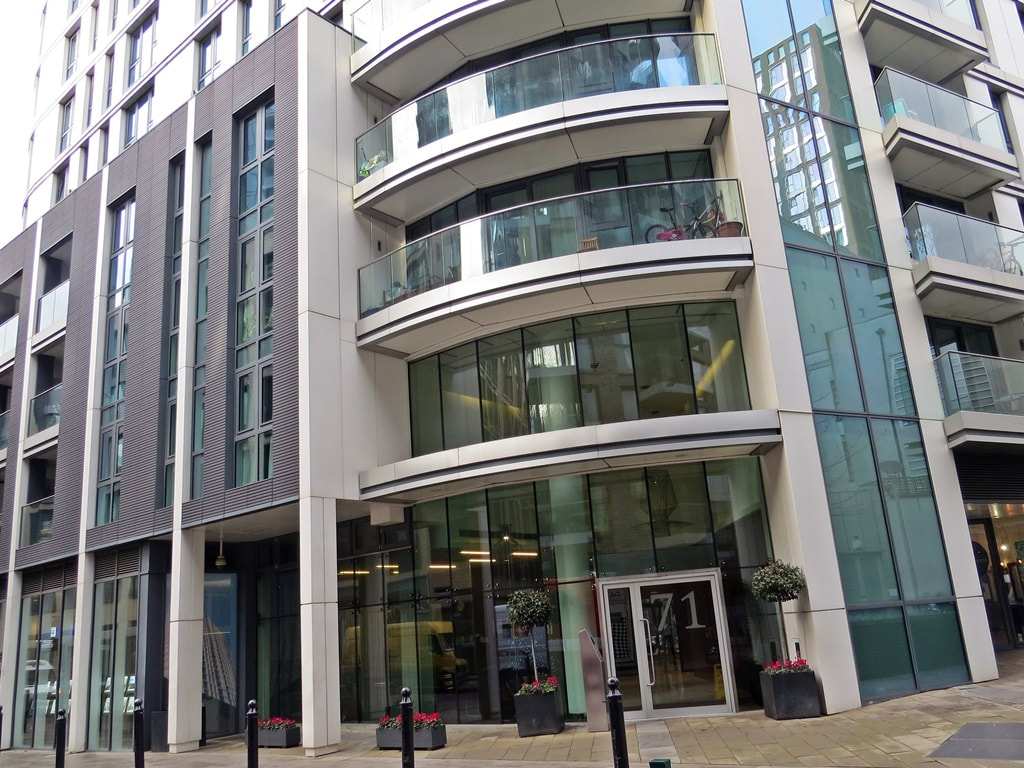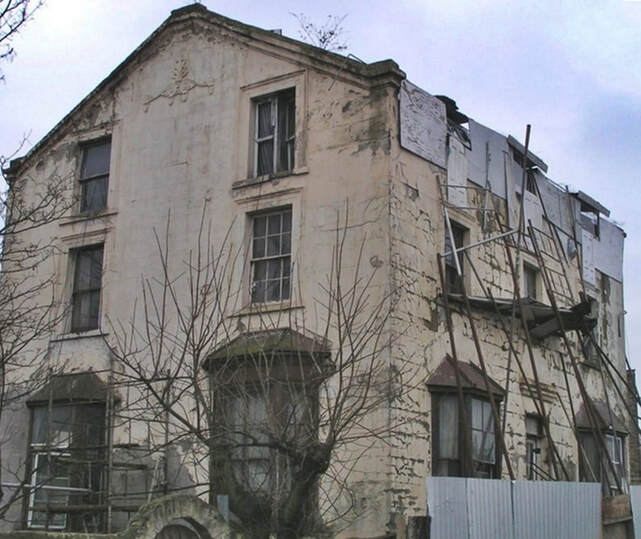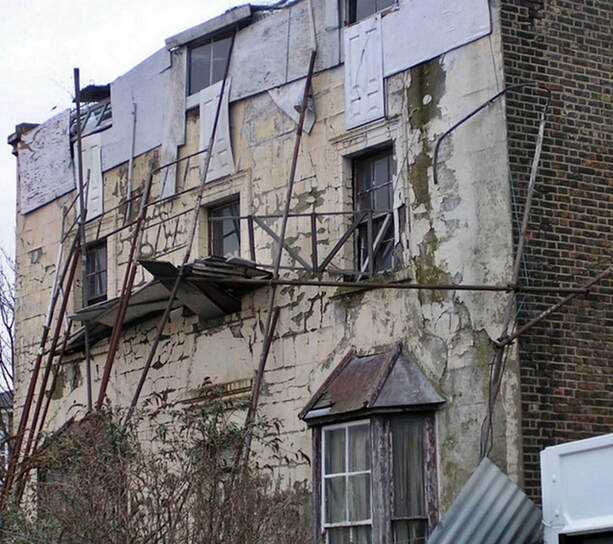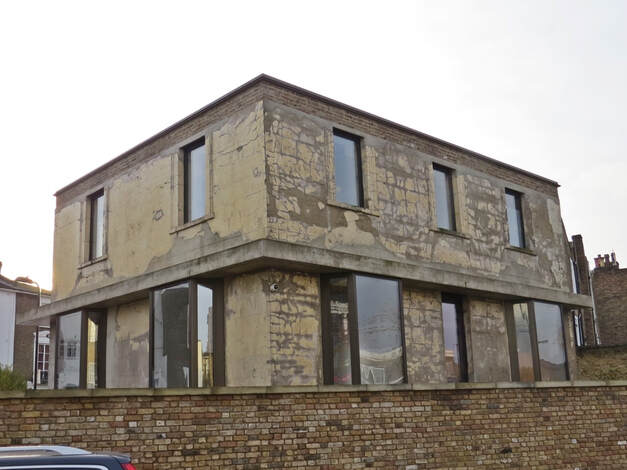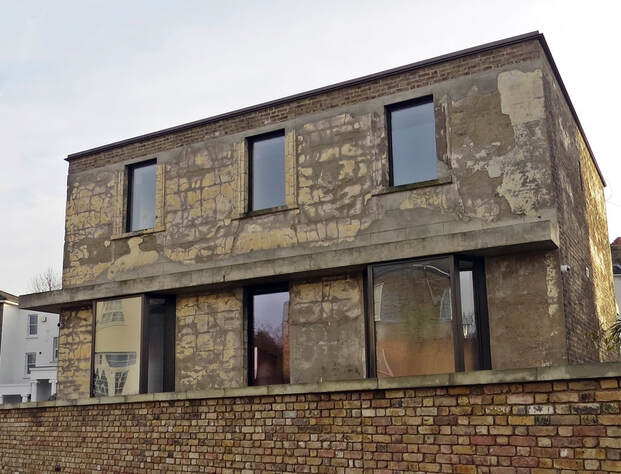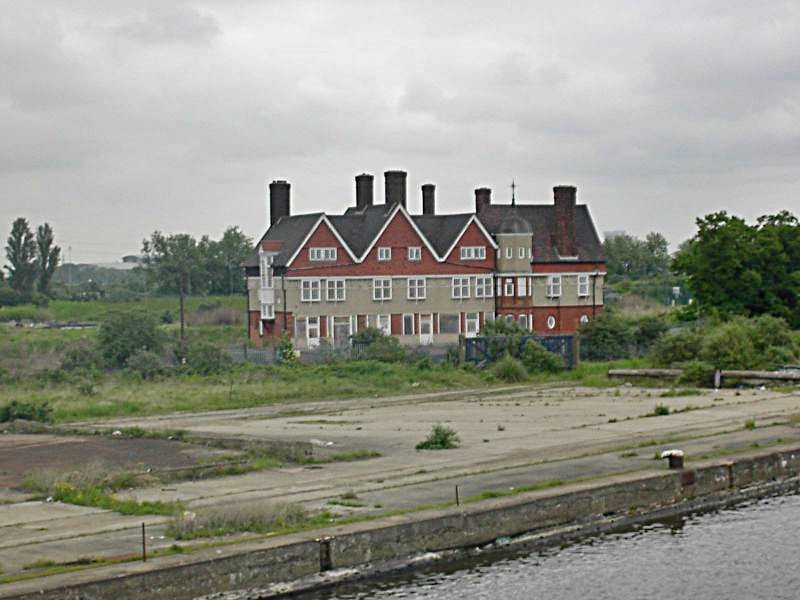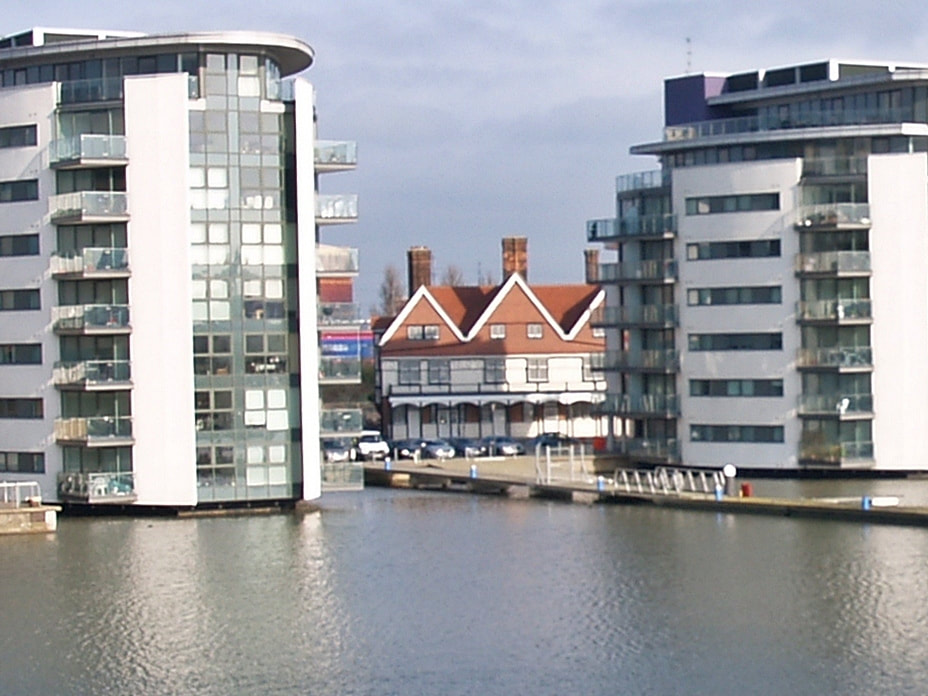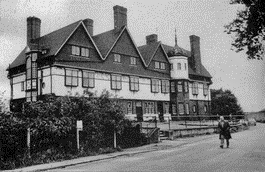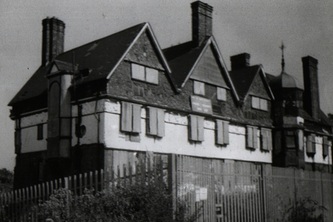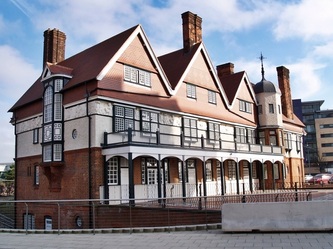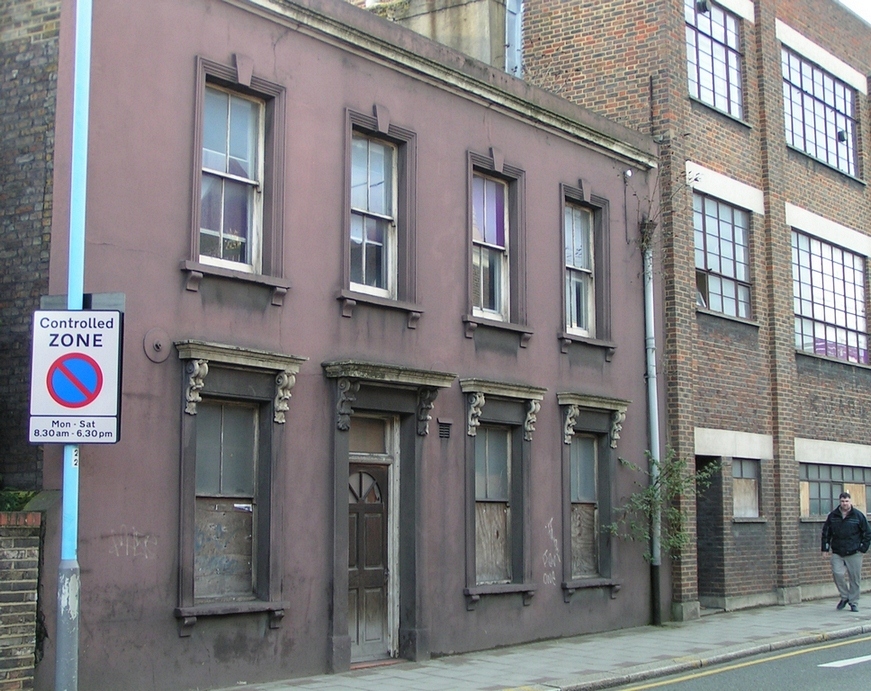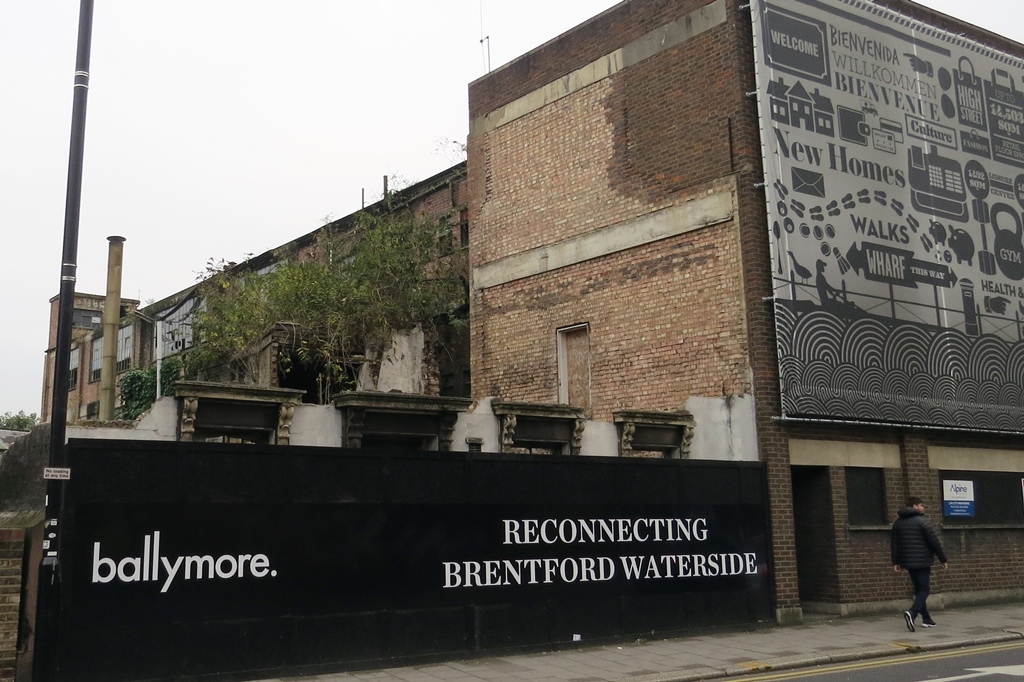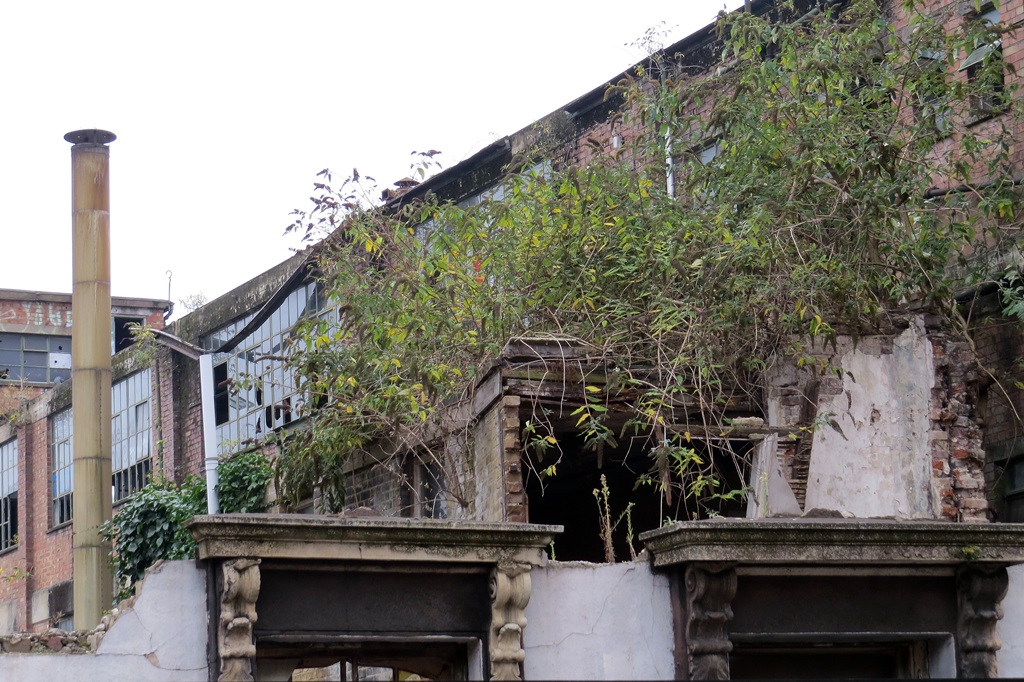The changing face of Derelict London - Then and Now pics - North of the River Thames.All pics by Paul Talling
Muscle Mansions & Former Home of Arnold Schwarzenegger - Forest Gate, E7
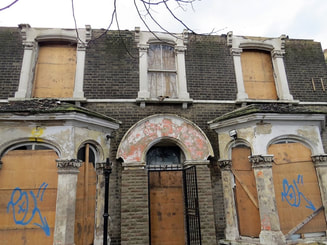 Muscle Mansions 2013
Muscle Mansions 2013
Newham bodybuilder Charles 'Wag' Bennett spotted Arnold Schwarzenegger, who was just 19 at the time, when judging the Mr Universe competition. He and his wife Diane invited Arnie to Forest Gate in 1966 to live at his house in Romford Road and train as a bodybuilder at the gym they ran downstairs.Diane coached him on the English language made his shirts and cooked him turkey breasts every hour on the hour for most of the day.Arnie referred to the Bennetts as his "British parents" whilst living there for two years. Wag was well known for his training including two other Mr Universe title holders plus the Incredible Hulk, Lou Ferrigno!
Arnie went on to become a Hollywood star, best know for films such as The Terminator, and later becoming Governor of California
The building became run down following Bennett's death in 2008. In April 2013 there was a fire and according to local press 60 firefighters tackled the fire which took about four hours to bring under control. Romford Road was closed for about 11 hours while the scene was investigated by police. Two men were rescued from the house and were later arrested with arson.
The house has now been restored and converted into flats. Below are some more photographs taken in 2013.
Red Lion Court - Wapping, E1
Red Lion Court was a partially demolished warehouse located on Reardon Path (previously called Red Lion Street).During the 1940s this Victorian building was under the ownership of Pye Storage Ltd, then Coordinated Traffic Services and by The Mentex Co from the 1960s where the building is listed as a cotton and plastics factory using recycled cotton combined with plastic to make hosepipes .The building had been derelict for well over 20 years although initial conversion to residential use did begin in the early 1990s but the developer went into receivership soon after starting work. The building was used in the music video for Morrissey's "We Hate it When our Friends Become Successful"
The building was considered to be in such a bad state that proposals were to demolish it and construct new build flats but builders managed to incorporate some of the old walls into into the new development,
The building was considered to be in such a bad state that proposals were to demolish it and construct new build flats but builders managed to incorporate some of the old walls into into the new development,
Stowe Villas - Tottenham, N15
This handsome pair of locally listed Victorian buildings, Stowe Villas (named after Harriet Beecher Stowe, the author of "Uncle Tom's Cabin") were in a very poor state. Regularly frequented by squatters and drug users until a fire virtually destroyed parts of the buildings.
The Council served a notice on the owner requiring him to remove rubbish, install boarding over doors and windows, and clean up the brickwork and metalwork. The owner did not comply. The Planning Department and the Conservation Team confirmed that "the houses must not be demolished and any development must include the renovation of the houses to their original state. Half-page ads featuring this building appeared in the national press promoting the Government's online planning initiative Direct Gov. The ads invited people to discover "what's being planned in my area". A housing association took over the site and have renovated the buildings and converted into them into flats.
The Council served a notice on the owner requiring him to remove rubbish, install boarding over doors and windows, and clean up the brickwork and metalwork. The owner did not comply. The Planning Department and the Conservation Team confirmed that "the houses must not be demolished and any development must include the renovation of the houses to their original state. Half-page ads featuring this building appeared in the national press promoting the Government's online planning initiative Direct Gov. The ads invited people to discover "what's being planned in my area". A housing association took over the site and have renovated the buildings and converted into them into flats.
Dalston Theatre (later known as Four Aces Reggae Club) - Dalston, E8
Originally opened as a circus in 1886, the small front entrance on Dalston Lane in the photo is original to this date. In 1897, the auditorium was rebuilt as a variety theatre seating 3,516. In 1920, the interior was redesigned into the Dalston Picture House. It closed in 1960 and the front foyer became a nightclub - the Four Aces Reggae club , then the auditorium became a warehouse, then a car auction room and lastly another nightclub. It had then been closed since 2000 before demolition in around 2009/10.
Hackney Council in Feb 2006 approved proposals for the total demolition of the Victorian and Georgian heritage buildings The Council ignored the objections raised by local market traders, businesses, arts groups and residents of Dalston, and voted to level the site, while simultaneously acknowledging that Councillors have not been presented with any plans for what will replace the historic buildings. The decision was greeted by loud protest from members of the public. Bill Parry-Davies, reacted to the council’s decision with dismay. "This wastrel council has a reputation as philistines with no regard for Dalston’s history and culture and being only concerned with selling our property to finance their bankrupt ideas for the Town Hall Square. They didn’t take the chance to change that reputation tonight."
Charles Collins (tenant of the Dalston Theatre 1963-1999 and founder of the Club Four Aces reggae club): "This [demolition] will destroy the memory and history of black culture in Dalston."
CJ Ross writes: "myself and some university friends used to travel across London to a 'rave' club at The Four Aces Club. This would have been around 1993-4 and there would be Labrynth club nights on Friday and Saturday nights. It was located in the entrance area, whilst the main auditorium on Roseberry Place housed a ragga/swingbeat/hip-hop-type affair. Sometime around '95/'96, Labrynth took over the main auditorium as well, before eviction and relocation to Tottenham, but this was after I was a regular. I know that illegal raves carried on in the theatre for many years since. Rumour also had it that it was once a residence of George Harrison, hence his picture being used by Labrynth, as can be seen on your picture of the Roseberry Place entrance. But I have my doubts. It was an interesting place, a club that stayed open until 6am but served no alcohol. Which may help to suggest the type of atmosphere inside. The clientele was a mixture of students, such as us and local 'yoot', of all races, who seemed to vary in age from 12 to 30. The atmosphere was happy, but there was a definate air of menace around the place.The club was made up of numerous rooms. The main entrance area was about thirty metres long, ten metres wide and made up the main dance area. This usually consisted of hardcore and jungle music, played by the likes of Nicky Blackmarket, DJ Sy and Kenny Ken. There was a small stage area at the back end (opposite to the entrance) with the DJ situated high to the left and a giant stack of speakers to the right. A small staircase went under the stage to the 'tunnel' area, perhaps the dodgiest arena in the club. This also housed the cloakrooms and toilets. A doorway off to the right hand side of the stage was clearly a fire escape, but the steps were used as a make-shift chill-out area. Just before the DJ box, on the left, was a doorway which led to the gardenand a stairwell into the basement. The basement either played more 'acid-y' sounds or the same as the main area. The garden was usually busy and the fire escape (which can be seen in your photo) led up to the top floor which was of a more relaxed, 'housey' nature. An alternative route to this top floor was a narrow, steep stairwell located not far from the main entrance.Considering the times we had and the passage of time, I'm surprised I can remember so much about the place. It wasn't the type of club that not too many of my peers would consider going to and some who went were intimidated by the place. I myself, found little wrong with it, perhaps the odd dodgy moment, but nothing bad. Perhaps my greatest long-term fear about the place was the amount of times we re-filled our water bottles from the taps there. God knows what kind of state the pipes were in. It holds a special place in my youth and it would be sad to see it destroyed"
Before demolition the site was squatted by protesters & I visited the site to do a live piece about Derelict London on the BBC Radio London Robert Elms show. Despite protests the Dalston Theatre has now been demolished and has been replaced by a "striking" development of 553 new homes (according to the developers)
Hackney Council in Feb 2006 approved proposals for the total demolition of the Victorian and Georgian heritage buildings The Council ignored the objections raised by local market traders, businesses, arts groups and residents of Dalston, and voted to level the site, while simultaneously acknowledging that Councillors have not been presented with any plans for what will replace the historic buildings. The decision was greeted by loud protest from members of the public. Bill Parry-Davies, reacted to the council’s decision with dismay. "This wastrel council has a reputation as philistines with no regard for Dalston’s history and culture and being only concerned with selling our property to finance their bankrupt ideas for the Town Hall Square. They didn’t take the chance to change that reputation tonight."
Charles Collins (tenant of the Dalston Theatre 1963-1999 and founder of the Club Four Aces reggae club): "This [demolition] will destroy the memory and history of black culture in Dalston."
CJ Ross writes: "myself and some university friends used to travel across London to a 'rave' club at The Four Aces Club. This would have been around 1993-4 and there would be Labrynth club nights on Friday and Saturday nights. It was located in the entrance area, whilst the main auditorium on Roseberry Place housed a ragga/swingbeat/hip-hop-type affair. Sometime around '95/'96, Labrynth took over the main auditorium as well, before eviction and relocation to Tottenham, but this was after I was a regular. I know that illegal raves carried on in the theatre for many years since. Rumour also had it that it was once a residence of George Harrison, hence his picture being used by Labrynth, as can be seen on your picture of the Roseberry Place entrance. But I have my doubts. It was an interesting place, a club that stayed open until 6am but served no alcohol. Which may help to suggest the type of atmosphere inside. The clientele was a mixture of students, such as us and local 'yoot', of all races, who seemed to vary in age from 12 to 30. The atmosphere was happy, but there was a definate air of menace around the place.The club was made up of numerous rooms. The main entrance area was about thirty metres long, ten metres wide and made up the main dance area. This usually consisted of hardcore and jungle music, played by the likes of Nicky Blackmarket, DJ Sy and Kenny Ken. There was a small stage area at the back end (opposite to the entrance) with the DJ situated high to the left and a giant stack of speakers to the right. A small staircase went under the stage to the 'tunnel' area, perhaps the dodgiest arena in the club. This also housed the cloakrooms and toilets. A doorway off to the right hand side of the stage was clearly a fire escape, but the steps were used as a make-shift chill-out area. Just before the DJ box, on the left, was a doorway which led to the gardenand a stairwell into the basement. The basement either played more 'acid-y' sounds or the same as the main area. The garden was usually busy and the fire escape (which can be seen in your photo) led up to the top floor which was of a more relaxed, 'housey' nature. An alternative route to this top floor was a narrow, steep stairwell located not far from the main entrance.Considering the times we had and the passage of time, I'm surprised I can remember so much about the place. It wasn't the type of club that not too many of my peers would consider going to and some who went were intimidated by the place. I myself, found little wrong with it, perhaps the odd dodgy moment, but nothing bad. Perhaps my greatest long-term fear about the place was the amount of times we re-filled our water bottles from the taps there. God knows what kind of state the pipes were in. It holds a special place in my youth and it would be sad to see it destroyed"
Before demolition the site was squatted by protesters & I visited the site to do a live piece about Derelict London on the BBC Radio London Robert Elms show. Despite protests the Dalston Theatre has now been demolished and has been replaced by a "striking" development of 553 new homes (according to the developers)
Below are some 2004 pics of Dalston Theatre
Knitwear Wholesalers - Aldgate, E1
Originally the factory of Louis London & Sons, a thriving business, exporting high quality British designs across the world from this Alie Street site. In 1959 HRH Queen Elizabeth II visited Louis London & Sons to mark the 100 year anniversary of the business. The site later became Camelot Fashions and S & V Knitwear before falling into dereliction.Now long gone and replaced by new build offices and flats.
The Mole's House - De Beauvoir Town, N1
A pensioner who lived here was known as "the Hackney mole man", because he spent 40 years digging a network of tunnels under his house.
Until the late 1960s the building was two quite beautiful houses, then in the early 70s they were purchased by 'The Mole' . He used to put extensions onto the house made of corrugated iron and window frames and let them out to foreign students...He extended the loft by taking slates off and putting in windows to raise the ceiling height....he filled the garden with derelict cars. But his favourite activity was tunneling from his front garden under Stamford Road....he actually got to the point where a hole appeared in the road and a number 76 bus fell partially into it......
From The Times:
"Like the Victorian builders of the Underground, William Lyttle loves the soft London clay. For the past 40 years the 75-year-old eccentric retired electrical engineer has been tunneling under his derelict home , upsetting the neighbours — not to mention their foundations — and spoiling the ambiance of an otherwise desirable enclave barely a mile north of the City.
You would think that Mr Lyttle was trying to dig his way out of a wartime German prison camp like Steve McQueen and Charles Bronson in The Great Escape. But, as he revealed in a television documentary on great DIY disasters, it was only his idea of home extension. In the documentary Mr Lyttle, originally from Northern Ireland, proudly displayed his excavation technique using only a shovel, a homemade pulley and his feet. “This is how the pyramids were built — with blood, sweat and toil,” he told the camera. Many of his tunnels were big enough to stand up in. “This is going to be the leisure centre,” he said, sweeping his hand round a large cavern. “And this in here will be the sauna.”
The development of Hackney’s first underground leisure centre appears to have been arrested at birth. Engineers, who recently made a preliminary inspection, took away more than 20 tonnes of excavated soil and assorted rubbish. They found the foundations of the four-storey, twenty-room house shored up with makeshift scaffolding poles and pit props. They plan to fill the tunnels with cement to stabilise the house and the road. Mr Lyttle will be sent the bill."
Hackney council evicted Mr Lyttle in 2006 to allow work to stabilise the house.The High Court ordered him to pay £350,000 within 14 days or the property could be sold to pay the bill and ordered him to be banned from going near the property After being evicted from his home he was put up in a hotel for three years, before the authority re-housed him in a nearby flat. Then the Mole Man had started digging again at his top-floor flat where he was found dead in 2010. Sources said Mr Lyttle had “gone back to his old behaviour” and knocked a tunnel-shaped hole in the dividing wall between his living room and kitchen on the De Beauvoir estate. “ There were holes everywhere and huge section of wall had been knocked down."
The house was expected to be demolished but the new owners decided to keep some of the shell to preserve a piece of social history
Finally a great quote from Mr Lyttle after a journalist asked him why he wanted to dig so many tunnels. He replied: “I was digging under the local bank to rob it, but when I got there it’d turned into a wine bar”
Until the late 1960s the building was two quite beautiful houses, then in the early 70s they were purchased by 'The Mole' . He used to put extensions onto the house made of corrugated iron and window frames and let them out to foreign students...He extended the loft by taking slates off and putting in windows to raise the ceiling height....he filled the garden with derelict cars. But his favourite activity was tunneling from his front garden under Stamford Road....he actually got to the point where a hole appeared in the road and a number 76 bus fell partially into it......
From The Times:
"Like the Victorian builders of the Underground, William Lyttle loves the soft London clay. For the past 40 years the 75-year-old eccentric retired electrical engineer has been tunneling under his derelict home , upsetting the neighbours — not to mention their foundations — and spoiling the ambiance of an otherwise desirable enclave barely a mile north of the City.
You would think that Mr Lyttle was trying to dig his way out of a wartime German prison camp like Steve McQueen and Charles Bronson in The Great Escape. But, as he revealed in a television documentary on great DIY disasters, it was only his idea of home extension. In the documentary Mr Lyttle, originally from Northern Ireland, proudly displayed his excavation technique using only a shovel, a homemade pulley and his feet. “This is how the pyramids were built — with blood, sweat and toil,” he told the camera. Many of his tunnels were big enough to stand up in. “This is going to be the leisure centre,” he said, sweeping his hand round a large cavern. “And this in here will be the sauna.”
The development of Hackney’s first underground leisure centre appears to have been arrested at birth. Engineers, who recently made a preliminary inspection, took away more than 20 tonnes of excavated soil and assorted rubbish. They found the foundations of the four-storey, twenty-room house shored up with makeshift scaffolding poles and pit props. They plan to fill the tunnels with cement to stabilise the house and the road. Mr Lyttle will be sent the bill."
Hackney council evicted Mr Lyttle in 2006 to allow work to stabilise the house.The High Court ordered him to pay £350,000 within 14 days or the property could be sold to pay the bill and ordered him to be banned from going near the property After being evicted from his home he was put up in a hotel for three years, before the authority re-housed him in a nearby flat. Then the Mole Man had started digging again at his top-floor flat where he was found dead in 2010. Sources said Mr Lyttle had “gone back to his old behaviour” and knocked a tunnel-shaped hole in the dividing wall between his living room and kitchen on the De Beauvoir estate. “ There were holes everywhere and huge section of wall had been knocked down."
The house was expected to be demolished but the new owners decided to keep some of the shell to preserve a piece of social history
Finally a great quote from Mr Lyttle after a journalist asked him why he wanted to dig so many tunnels. He replied: “I was digging under the local bank to rob it, but when I got there it’d turned into a wine bar”
Gallions Hotel - North Woolwich, E16
GALLIONS HOTEL 2003 (left) and Today (right)
The P & O company built the Gallions Hotel for first-class steamer passengers.A stylish survival of the days when the Royal Albert Dock handled liners to the British Empire, the Gallions Hotel was completed in 1883. Closed in 1972 and empty for many years, the hotel stood forlorn in the middle of a large decaying site.Liners from the distant ports of the British Empire would stop at Gallions on their way to their final berth upriver, so that their passengers could disembark and reach the city quicker. It featured underground stables and an underground passage to the dock.
Situated in the Albert Basin, it formed part of the Royal Docks project, which was one of the largest integrated developments happening in London turning Gallions Hotel into a new waterside community as part of a £100m project.
On 3 September 1878, on the return upriver from a day trip, the steam powered pleasure steamer 'Princess Alice' collided with the collier 'Bywell Castle' just off Gallion's Reach at Woolwich. In very warm weather the pleasure boat was packed with between 700 and 900 day-trippers. The 'Alice' was only equipped to take 500. She sank almost immediately with the loss of approximately 640 lives.
As you can see from the the latest 2019 pictures above the hotel building has now been restored as a restaurant and office but dwarfed by a new housing development.
Situated in the Albert Basin, it formed part of the Royal Docks project, which was one of the largest integrated developments happening in London turning Gallions Hotel into a new waterside community as part of a £100m project.
On 3 September 1878, on the return upriver from a day trip, the steam powered pleasure steamer 'Princess Alice' collided with the collier 'Bywell Castle' just off Gallion's Reach at Woolwich. In very warm weather the pleasure boat was packed with between 700 and 900 day-trippers. The 'Alice' was only equipped to take 500. She sank almost immediately with the loss of approximately 640 lives.
As you can see from the the latest 2019 pictures above the hotel building has now been restored as a restaurant and office but dwarfed by a new housing development.
(Left) 1971 by Derelict London visitor Eric Gold (middle) 1990s pic taken by Derelict London visitor Kirstina Bond, (Right) 2012 by myself
Demolition of 81 High Street, Brentford
The dilapidated Georgian building on the High Street first photographed by Derelict London in 2003 was demolished early in 2015 .Officers at Hounslow Council described it in a planning report as having "little architectural and heritage value". One opponent had scrawled "Save me from demolition" in large lettering across the front of the building just before it was reduced to rubble.
Click a link to view more Then and Now Galleries:
Derelict London 2008 Book pics Then and Now
Derelict London - Then and Now pics South of the River
Derelict London 2008 Book pics Then and Now
Derelict London - Then and Now pics South of the River
Paul Talling's Derelict London - all photographs are copyright © 2003-2024
Click the envelope icon to join the mailing list for occasional news on website updates, new book releases and Paul's guided walking tours. Follow Derelict London on Facebook and Twitter
Please do not contact me with property/ filming/photo shoot location queries
Click the envelope icon to join the mailing list for occasional news on website updates, new book releases and Paul's guided walking tours. Follow Derelict London on Facebook and Twitter
Please do not contact me with property/ filming/photo shoot location queries

